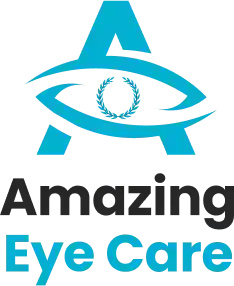Myopia, commonly known as nearsightedness, is a refractive error that affects millions of people worldwide. With the prevalence of myopia on the rise, it’s crucial to separate fact from fiction when it comes to controlling its progression. There are several myths and misconceptions surrounding myopia control that can lead to confusion and misinformation.
5 Myths and Misconceptions About Myopia
In this article, we’ll debunk some of the most common myths and provide clarity on effective myopia control strategies.
Myth 1: Myopia Can’t Be Controlled
One prevalent myth is that myopia cannot be controlled or slowed down. However, recent advancements in optometry have shown that there are indeed effective ways to manage and control myopia progression. Techniques such as orthokeratology (ortho-k), multifocal contact lenses, and atropine eye drops have been proven to be successful in slowing down the progression of myopia in children and adolescents.
Myth 2: Myopia Control Methods Are Invasive
Another misconception is that myopia control methods are invasive and uncomfortable. On the contrary, many myopia control strategies are non-invasive and well-tolerated by patients. For example, ortho-k involves wearing specially designed gas-permeable contact lenses overnight to reshape the cornea temporarily. This process is painless and reversible, making it a safe option for myopia control.
Myth 3: Myopia Control Is Only for Children
Some people believe that myopia control is only effective in children and cannot benefit adults. While it’s true that myopia typically develops during childhood, myopia control methods can still be beneficial for adults who wish to slow down its progression. Ortho-k, for instance, can be effective for adults as well as children, providing clear vision during the day without the need for glasses or contact lenses.
Myth 4: Myopia Control Is Expensive
Cost is often cited as a barrier to seeking myopia control treatment. However, the reality is that the cost of myopia control varies depending on the method chosen and individual factors such as insurance coverage. While some options may require an initial investment, such as ortho-k lenses, the long-term benefits of slowing down myopia progression can outweigh the cost.
Myth 5: Myopia Control Is Not Effective
One of the most common myths surrounding myopia control is that it’s not effective or backed by scientific evidence. On the contrary, numerous studies have demonstrated the efficacy of various myopia control methods in slowing down the progression of myopia and reducing the risk of associated eye conditions such as retinal detachment and glaucoma. It’s essential to consult with an eye care professional to determine the most suitable myopia control strategy based on individual needs and circumstances.
Conclusion
Myopia control isn’t a myth—it’s a reality. By dispelling misconceptions and embracing proven methods, you can actively manage your myopia and promote healthier eyes. Don’t hesitate to seek guidance from eye care professionals to explore suitable strategies for maintaining clear vision. With informed choices and proactive measures, you can pave the way for better eye health and clearer sight.
Ready to take control of your myopia? Schedule an appointment with Amazing Eye Care Atascocita, to learn more about effective myopia control strategies tailored to your needs. Don’t let myths and misconceptions hold you back from achieving clearer vision and healthier eyes.
Related Article: Choosing an Eye Care Doctor for Myopia Control


